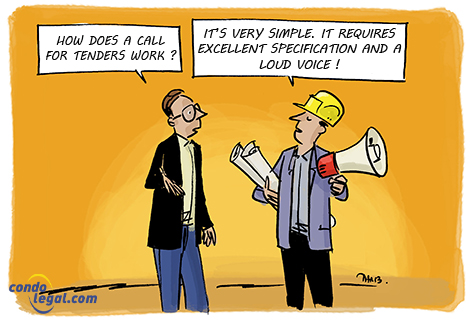 Wood fireplaces, appreciated for their charm and conviviality, are now raising major concerns in co-ownership buildings. Due to public health, environmental protection and safety issues, these installations must now comply with strict standards, such as those established by the Construction code. In addition, municipal regulations, particularly in Montreal, impose significant restrictions on their use and sometimes require costly compliance work. This article examines the challenges associated with these installations and proposes solutions to ensure compliance while preserving the safety of occupants.
Wood fireplaces, appreciated for their charm and conviviality, are now raising major concerns in co-ownership buildings. Due to public health, environmental protection and safety issues, these installations must now comply with strict standards, such as those established by the Construction code. In addition, municipal regulations, particularly in Montreal, impose significant restrictions on their use and sometimes require costly compliance work. This article examines the challenges associated with these installations and proposes solutions to ensure compliance while preserving the safety of occupants.
Municipal regulations and their impact
Municipalities, such as Montreal, have the legal authority to adopt regulations regarding public health and the environment. This includes restrictions on installations such as wood-burning fireplaces, even if they were compliant when they were initially installed. For example, since October 1, 2018, Montreal has banned the use of non-compliant fireplaces in order to reduce fine particle emissions, a major public health issue.
This by-law imposes a strict limit: wood-burning fireplaces and stoves must emit less than 2.5 g/h of fine particles to be used legally. In addition, in the event of a smog alert, the use of solid fuel appliances is prohibited, even if they meet the standards, under penalty of fines.
Non-compliant fireplaces: a risk for the co-ownership
In buildings constructed mainly in the 1980s and 1990s, wood-burning fireplaces are often poorly insulated or compartmentalized, increasing the risk of fire. As early as 2008, the Régie du bâtiment du Québec (RBQ) emphasized the importance of maintaining the integrity of fire resistant partition to limit the spread of fires. This communiqué highlighted, among other things, the necessity of preserving the fire resistant partition integrity of the vertical service shaft housing a chimney flue and adhering to installation standards to prevent the spread of a fire from one unit to another.
Construction code requirements
The Construction code establishes strict standards to limit the spread of fire through chimney flues, ensuring the safety of occupants and the integrity of buildings. These standards include:
The illustration below, published by the Régie du bâtiment du Québec (RBQ), clearly shows the consequences that a shared technical void can have in the event of a fire.

 The photo shows an unsealed chimney flue, with gaps around the pipes. This configuration violates fire safety standards as it facilitates the spread of fire and smoke between floors. Proper compartmentalization with fire-resistant materials is essential to ensure the safety of the occupants.
The photo shows an unsealed chimney flue, with gaps around the pipes. This configuration violates fire safety standards as it facilitates the spread of fire and smoke between floors. Proper compartmentalization with fire-resistant materials is essential to ensure the safety of the occupants.
Costs and challenges associated with compliance
Upgrading wood-burning fireplaces up to code, while essential to ensuring occupant safety and preventing serious incidents caused by uncontrolled fire spread, can result in significant costs, especially in older buildings. These renovations often involv
This work may be perceived as a significant financial burden, but it is essential to preserve the safety of occupants and protect the value of the building.
Alternative solutions for co-ownership
For co-ownership that do not wish to invest in bringing wood-burning fireplaces up to standard, several alternatives exist:
The role of the architect in compliance
An architect plays a central role in the assessment and compliance of non-compliant fireplaces. Their expertise allows them to:
Conclusion
Bringing wood fireplaces into compliance is an essential step in complying with municipal regulations and ensuring safety in co-ownerships. Although the costs can be high, adapted solutions help preserve both the safety of residents and the value of property. The role of architects, co-ownership managers and syndicates is central to carrying out these projects successfully.
 WHAT YOU SHOULD KNOW ! The Régie du bâtiment du Québec has published a guide in PDF format (675 KB) to facilitate the request for different measures concerning the upgrading of chimney flue installations. This guide was designed to support owners and stakeholders in the construction sector by providing them with key principles to use in this process.
WHAT YOU SHOULD KNOW ! The Régie du bâtiment du Québec has published a guide in PDF format (675 KB) to facilitate the request for different measures concerning the upgrading of chimney flue installations. This guide was designed to support owners and stakeholders in the construction sector by providing them with key principles to use in this process.
 WHAT TO KEEP IN MIND : In the context of new construction, compliance is generally achieved by complying with the Construction Code in force. However, for existing constructions, it may be necessary to use different measures to meet the standards, especially if the current installations have compliance gaps.
WHAT TO KEEP IN MIND : In the context of new construction, compliance is generally achieved by complying with the Construction Code in force. However, for existing constructions, it may be necessary to use different measures to meet the standards, especially if the current installations have compliance gaps.
 WARNING ! Non-compliant installations pose a serious risk to the safety and insurability of co-ownership properties, particularly regarding fire hazards. It is essential to assess and bring these conduits up to code to ensure the safety of occupants and prevent major incidents.
WARNING ! Non-compliant installations pose a serious risk to the safety and insurability of co-ownership properties, particularly regarding fire hazards. It is essential to assess and bring these conduits up to code to ensure the safety of occupants and prevent major incidents.
Georges Fallah, Architect
Member of the Quebec Order of Architects (MOAQ)
President of G.A.P.Immeubles inc
Tél. : (514) 946 8807
Fax : (450) 478-4932
Courriel : [email protected]
The columns express the personal opinion of their authors and do not in any way commit the responsibility of the site's publisher, CondoLegal.com Inc. The content and opinions expressed in a column are solely those of the author.




